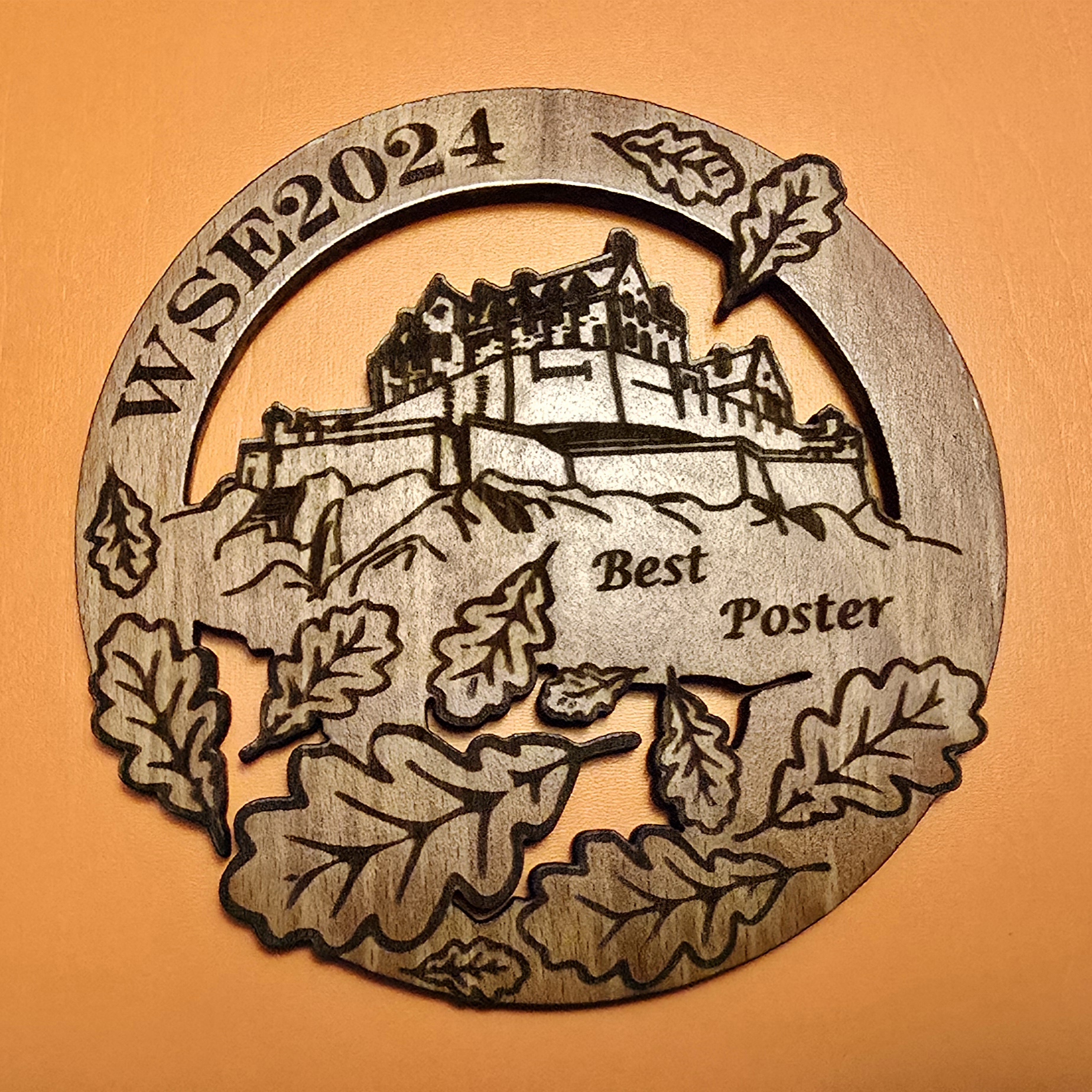



Every year since 2008 (its 4th conference) the Northern European Network for Wood Science and Engineering (WSE) has awarded prizes for the best student presentations. This year, the 20th conference, held in Edinburgh, continued the tradition.
The best short abstract was won by Ingrid Bakke from NMBU – Norwegian University of Life Sciences.
The best poster presentation was won by Lena Maria Leiter from The University of Natural Resources and Life Sciences, Vienna (BOKU)
The best oral presentation was won by Marlene Cramer from Edinburgh Napier University.
The Prizes were sponsored by CIOL® AS and presented by the network’s lead Erik Larnøy.

The best short abstract award was made from “waste” UK-grown oak from the Building from England’s Woods project. The best poster award was made from “waste” UK-grown beech from an industrial research project. The best oral presentation award was made from both of the above, plus “waste” UK-grown sycamore from the SIRT project and “waste” blue stained pine from a pallet wood industrial project.
The papers for the conference can be found on the Network’s website, and accessed by setting up a free account.
The short abstracts were written to be accessible to a general audience.
The best short abstract:
The timber-time continuum: VOC emission, wood, and the indoor environment
Ingrid Bakke, Norwegian University of Life Sciences, Norway
Imagine living in a house made of wood. It’s not necessarily limited to the structure of the house itself, but extends to the wooden furniture you relax on, the wooden cabinets that store your essentials, and the wooden decor that adds a touch of nature to your indoor environment. Now, consider this: all types of wood emit volatile organic compounds (VOCs) over time. These tiny gas molecules mix with the air we breathe, potentially affecting our health and the environment. While this isn’t a new discovery, what intrigued me as a scientist is the variation in VOC emissions over time among different types of wood.
In the past few months, I’ve been deep diving into literature, analysing previously reported data, and conducting lab experiments on various wood types and building materials. Two key aspects of time became crystal clear. First, the VOC emissions from wood decrease over time after a tree is cut down, but the rate of this decrease isn’t the same for all types of wood materials. This variability intrigued me and prompted deeper analysis. Secondly, we’re witnessing a growing focus on using wood in construction due to its sustainable qualities. As we strive to create more energy-efficient buildings with better insulation and less ventilation, our buildings are becoming more airtight. This means that VOCs emitted indoors have a higher chance of building up, potentially impacting our health.
As an analytical chemist my passion lies at the intersection of understanding nature’s intricate details and creating healthier living spaces. I am driven to identify and minimize exposure to indoor pollutants, especially from something as common and “natural” as wood building materials. In addition, the urgency to address global climate issues, such as reducing CO₂ emissions, makes this research even more relevant. This is not just about filling knowledge gaps; it’s about the potential positive impact we can make on our health and the environment. This journey into the timber-time continuum is not just my professional pursuit, but also a personal mission.
My aim in studying these dual aspects of time – the natural decrease of VOC emissions from wood and the evolving construction practices – is to better understand the time-dependent behaviour of wood. I hope that this knowledge will contribute to designing safer, more sustainable living spaces with improved indoor air quality.
Keywords: wood, VOC emission, time-dependent behaviour, building materials, sustainability
Relevance to the conference theme of time:
My paper explores the timely theme of the conference by focusing on the time-dependent behaviour of VOC emissions from wood. It’s a journey into the past and future of wood in our built environment, highlighting how changes over time can impact our indoor air quality and energy efficiency. If you’re curious about the “life” of wood in our homes, this is for you!
